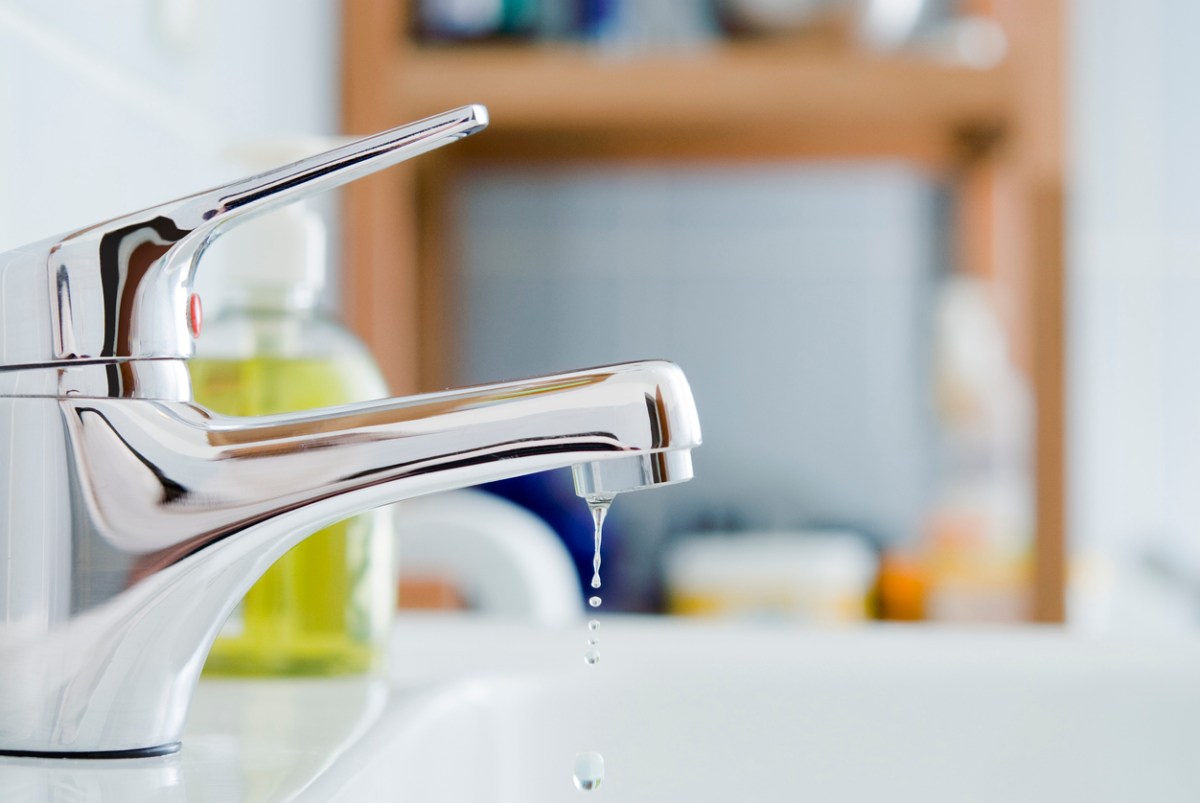When It's Crucial to Fix a Broken Faucet
When It's Crucial to Fix a Broken Faucet
Blog Article
This article listed below in relation to Water Dripping from Faucet: Why and How to Fix is exceptionally stimulating. Check it out for your own benefit and figure out what you think about it.

Trickling taps could seem like a minor inconvenience, yet their influence exceeds simply the inconvenience of the noise. From drainage to incurring unneeded economic prices and wellness dangers, overlooking a dripping faucet can lead to different effects. In this short article, we'll delve into why it's crucial to address this usual house issue immediately and successfully.
Wastage of Water
Ecological Impact
Leaking faucets add considerably to water waste. According to the Epa (EPA), a solitary faucet trickling at one drip per second can throw away more than 3,000 gallons of water per year. This not only pressures water sources yet also impacts communities and wildlife dependent on them.
Step-by-Step Guide to Taking Care Of a Dripping Tap
Tools Called for
Prior to trying to fix a dripping faucet, gather the necessary tools, including an adjustable wrench, screwdrivers, substitute components (such as washing machines or cartridges), and plumber's tape.
Common Faucet Issues and Their Solutions
Determine the sort of faucet and the details concern creating the drip. Usual problems include worn-out washing machines, rusty valve seats, or faulty O-rings. Refer to maker directions or on-line tutorials for detailed guidance on repairs.
Financial Expenses
Boosted Water Bills
Beyond the ecological impact, leaking taps can inflate water costs considerably. The gathered waste gradually converts into greater energy expenditures, which might have been prevented with prompt repair services.
Possible Property Damage
Furthermore, extended leaking can lead to harm to components and surfaces bordering the faucet. Water accumulation can trigger staining, corrosion, and even structural concerns if left ignored, causing extra repair prices.
Health Problems
Mold And Mildew and Mildew Development
The continuous presence of moisture from a leaking tap develops an optimal setting for mold and mildew and mold growth. These fungi not only compromise indoor air high quality however additionally position health risks, specifically for people with respiratory system problems or allergic reactions.
Waterborne Conditions
Stationary water in leaking taps can become a breeding ground for bacteria and other virus, increasing the danger of waterborne diseases. Pollutants such as Legionella bacteria thrive in stationary water, possibly bring about serious illnesses when consumed or inhaled.
DIY vs. Specialist Fixing
Advantages and disadvantages of Do It Yourself Fixing
While some might try to deal with a leaking faucet themselves, do it yourself repair work feature their own set of obstacles. Without correct knowledge and tools, DIY attempts can aggravate the problem or result in insufficient fixings, extending the problem.
Benefits of Employing a Professional Plumber
Working with a professional plumber ensures that the underlying cause of the trickling tap is attended to effectively. Plumbing professionals possess the knowledge and equipment to diagnose and repair tap issues effectively, conserving time and reducing the risk of more damage.
Ecological Obligation
Individual Payment to Preservation
Taking responsibility for dealing with trickling faucets straightens with broader initiatives towards water preservation and ecological sustainability. Every individual's activities collectively make a considerable impact on preserving valuable sources.
Sustainable Living Practices
By focusing on prompt fixings and taking on water-saving practices, individuals contribute to lasting living methods that benefit both existing and future generations.
Safety nets
Normal Upkeep Tips
To prevent trickling faucets, perform regular upkeep such as cleaning up aerators, inspecting for leaks, and changing worn-out components promptly. Furthermore, consider installing water-saving tools or updating to a lot more efficient components.
Importance of Prompt Repair Works
Resolving dripping faucets as soon as they're noticed protects against further water waste and potential damages, ultimately saving both water and cash over time.
Influence On Property Value
Assumption of Well-Maintained Property
Preserving a property in good condition, consisting of dealing with maintenance issues like leaking faucets, enhances its perceived value and worth among prospective purchasers or renters.
Influence on Resale Worth
Features with well-maintained plumbing fixtures, consisting of taps, command greater resale worths in the real estate market. Addressing dripping faucets can add to a favorable impression throughout property assessments and arrangements.
Conclusion
Resolving a leaking faucet exceeds plain benefit; it's a necessary action towards conserving water, minimizing economic expenses, and protecting health and residential property. Whether through DIY repair services or professional help, acting to repair dripping faucets is a small yet impactful means to advertise liable stewardship of sources and add to a healthier, more sustainable future.
How to Fix a Leaky Faucet: Step-by-Step Repair Guide
A leaky faucet may seem like a simple annoyance, but if it's not fixed promptly, that leak could cost hundreds to potentially thousands. From water damage to mold, mildew, and high water bills, even a tiny leak can be catastrophic if left unattended. Damage like this can even affect the overall value of your home, so it's important to take the right approach for leaky faucet repair. You may need the help of a plumber in some cases, but we've got a few tips you can try on how to fix a leaky faucet before calling the pros.
Four Faucet Types
When you're learning how to fix a leaky faucet, the first step is knowing what kind of faucet you're working with! There are four common types.
Cartridge Faucets
Cartridge faucets come in one- or two-handled varieties. In one-handled cartridge faucets, hot and cold water combines in a single cartridge. In the two-handled versions, hot and cold water are controlled separately and mixed in the faucet.
Ball Faucets
Ball faucets have a single lever you push up and down to adjust the pressure and rotate to change the temperature. A slotted metal ball controls the amount of water allowed into the spout.
Compression Washer Faucets
They're the oldest type of faucet, but they're still used in many homes — especially older ones. Compression faucets have two separate handles that, when turned, raise or lower the washer that seals a water valve. This valve stops water from flowing through the faucet when it is turned off.
Disc Faucets
Disc faucets rarely need to be repaired due to their maintenance-free design. The water flow is controlled by two discs — the upper one raises and lowers against a fixed lower disc, creating a watertight seal. If your disc faucet starts leaking, you may need to replace the seals or clean residue buildup from the inlets.
Fixing a Leaky Faucet
Step 1: Turn Off the Water
Whether you're learning how to fix a leaky bathtub faucet or how to fix a leaky kitchen faucet, always turn off the water supply to your working area when you're fixing a leak. The last thing you want is a flood added to your list of things to fix.
Look for the shutoff valves below your sink or around the tub and turn them clockwise to stop the water flow. If your faucet doesn't have shutoff valves, you may need to turn off the water for the whole house. Check to make sure it's off by turning the faucet on. If nothing comes out, you're ready to start the repair.
Step 2: Take Apart the Faucet
How you disassemble your faucet depends on the type of fixture you have. You can use a flathead screwdriver to remove the caps on top of the handle or handles for cartridge and compression faucets. Inside, you should see handle screws. Unscrew these with a screwdriver to remove the handle.
Disc- and ball-style faucets will typically have an inlet screw near the handle, and removing that will reveal the interior of the faucet.
Detach the Valve Stem
For cartridge- and compression-style faucets, you'll see the inner valve stem or cartridge once you remove the faucet handles. If you have a compression faucet, unscrew the brass valve stem. If you have a cartridge faucet, pull out the cartridge. If your cartridge has been in place for a while, it may require some tools or extra force to remove it due to mineral deposits.
Examine and Replace Parts
Once you've removed the parts, check them out to confirm what needs to be replaced. You may see corroded rubber washers, O-rings, stems, or cartridges. On a ball-style faucet, check the seats and springs for damage.
If you need to repair a leaky disc faucet, check the inlet and seals on the lower disc.
Once you determine what parts must be replaced, visit your local hardware store. Bring the damaged parts with you to ensure you can purchase the correct components to replace them.
Clean Valves and Faucet Cavity
If you've removed a stem or cartridge, you may notice mineral buildup in the faucet's threads. Use white vinegar to clean the valve seat by soaking it for a few minutes, then scrub it away with a soft toothbrush and rinse with warm water. You can also clean the interior of the faucet in the same way.
Reassemble the Faucet
Once your faucet is cleaned and the required parts have been replaced, it's time to reassemble it. Put the pieces back together and slowly turn the water supply back on. Doing this slowly is crucial because too much initial water pressure can damage the new hardware you've just installed.
https://homewarranty.firstam.com/blog/how-to-fix-leaky-faucet

Do you enjoy reading up on 4 Common Reasons for a Leaky Faucet? Leave feedback below. We would be glad to listen to your suggestions about this post. We are looking forward to see you back again in the near future. Sharing is good. Helping others is fun. Many thanks for your time. Don't forget to visit our blog back soon.
Report this page